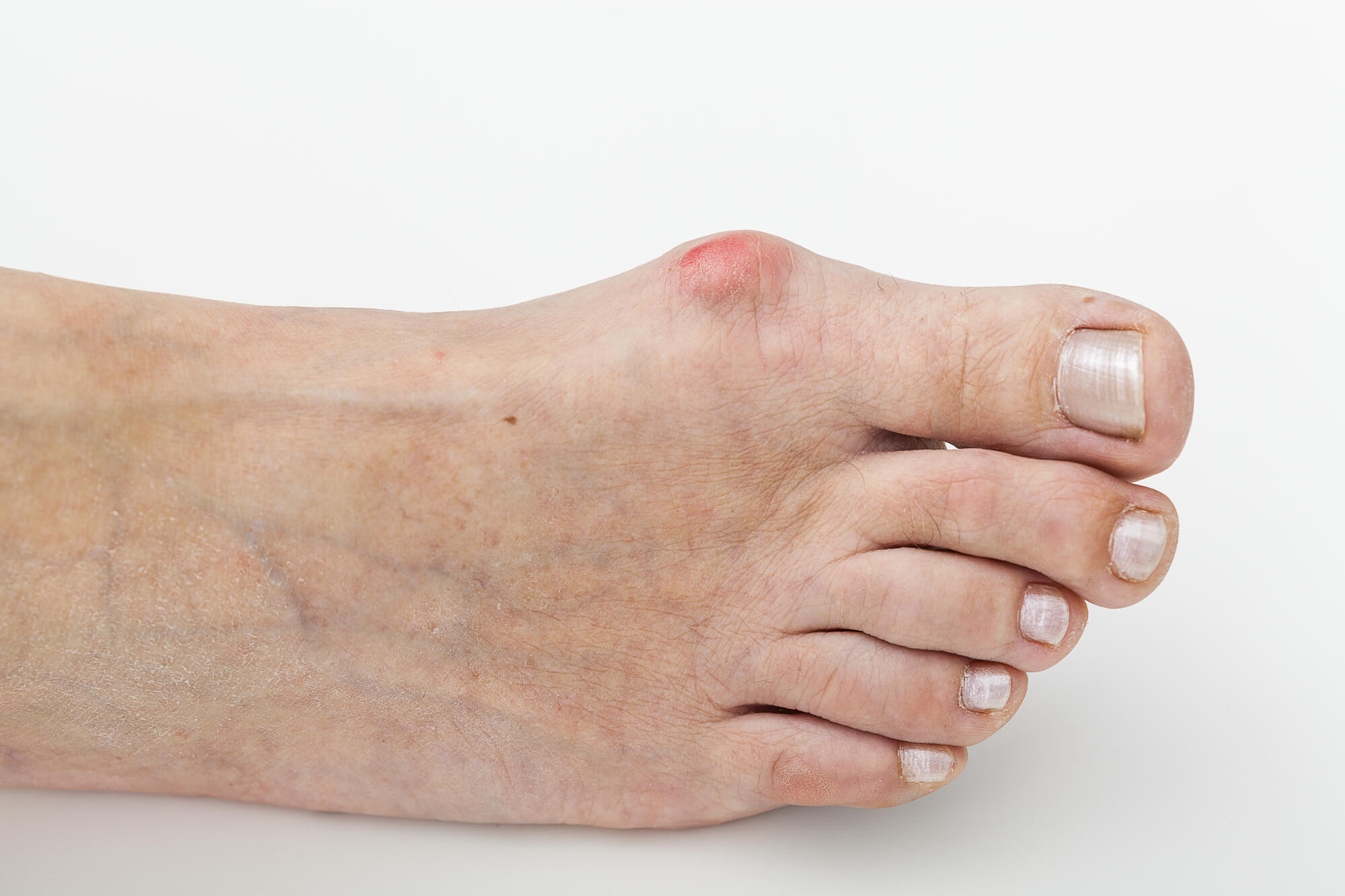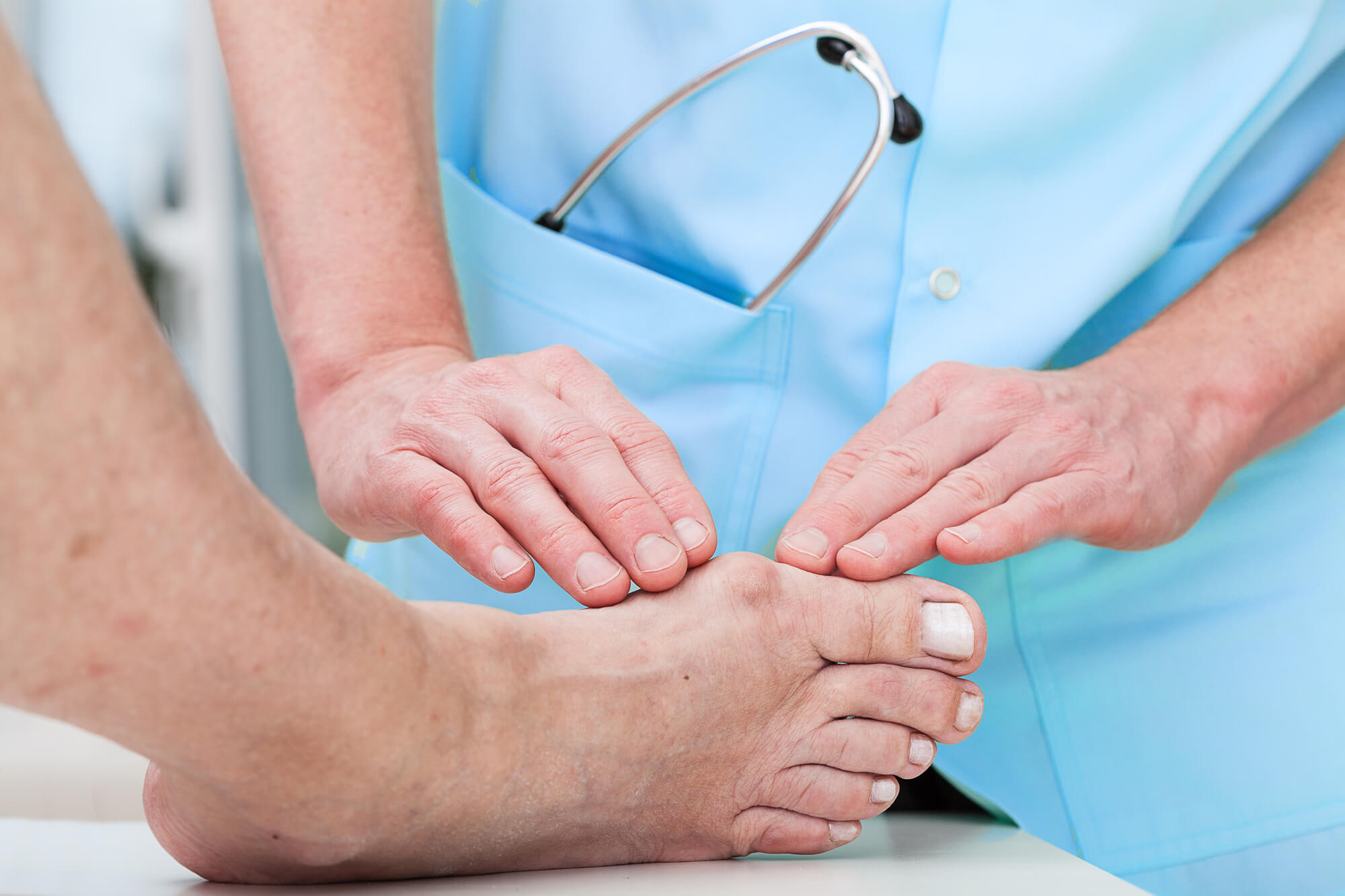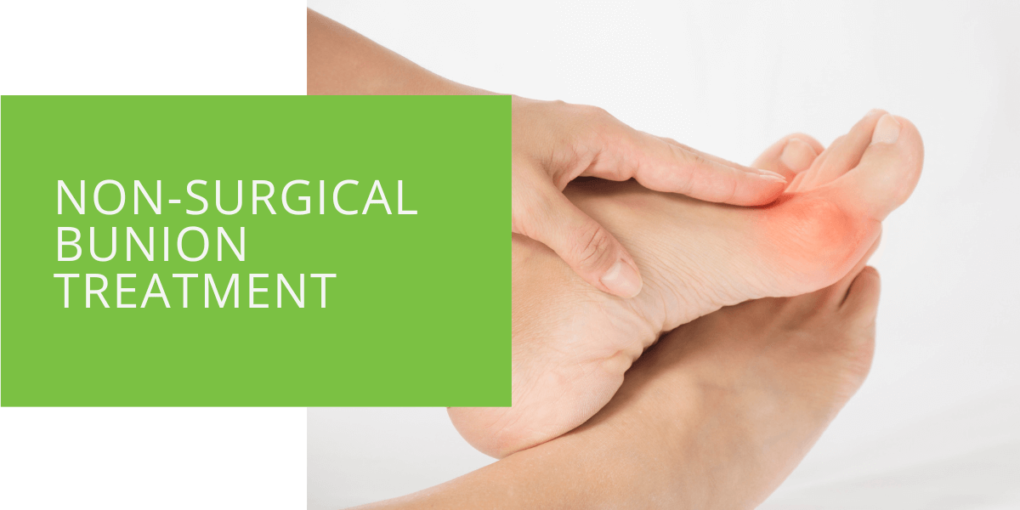Non-Surgical Bunion Treatment
A bunion, also known as hallux valgus, is a bony bump that forms at the base of the big toe. Bunions occur when the joint at the base of the big toe is forced out of its natural position, causing the big toe to lean toward the second toe. This can result in pain and discomfort when walking, wearing shoes, or performing other activities.
Non-Surgical Bunion Treatment Options
Several non-surgical treatment options can help alleviate symptoms and reduce pain if you suffer from bunions.
Toe Separators
Toe separators are small devices that can be placed between the toes to help align them and reduce pressure on the bunion. These devices can be particularly helpful for people with bunions between the second and third toes. Toe separators are made of soft materials and designed to be comfortable. Depending on the individual's preference, they can be worn with or without shoes.
Bunion Splints
Bunion splints are devices worn at night to help realign the toe and reduce pressure on the bunion. These splints are typically made of soft materials and are designed to be comfortable. Bunion splints can be particularly helpful for people who have moderate to severe bunions. They work by holding the toe straight while the individual sleeps, which can help reduce the pressure on the bunion and relieve pain and discomfort.
There are two main bunion splints: night splints and day splints. Night splints are designed to be worn while sleeping and work by holding the toe straight throughout the night. On the other hand, day splints can be worn while the individual performs daily activities. Day splints are often more discreet than night splints and can be worn with shoes.

Bunion Braces
Like bunion splints, bunion braces are devices worn daily to help realign the toe and reduce pressure on the bunion. These braces are typically made of soft materials and are designed to be comfortable. Bunion braces can be particularly helpful for people with mild to moderate bunions.
Bunion braces work by holding the toe in a straight position while the individual is walking or performing other activities. They are designed to fit snugly around the foot and can be worn with shoes. Bunion braces are often more discreet than bunion splints and can be a good option for people who prefer to wear shoes during the day.
Bunion Inserts
Bunion inserts are small devices placed inside the shoe to provide additional support and cushioning to the foot. These inserts can help reduce pressure on the bunion and relieve pain and discomfort. Bunion inserts come in various materials, including foam, gel, and silicone. They can be customized to fit the individual's foot and worn with any shoe.
Bunion inserts are designed to provide support and cushioning to the foot, which can help reduce pressure on the bunion and relieve pain and discomfort. They can be particularly helpful for people with mild to moderate bunions seeking a non-invasive treatment option.
Stretching and Strengthening Exercises
Gentle stretching and strengthening exercises can help improve the flexibility and strength of the foot and toe muscles. These exercises can help reduce pain and prevent further damage to the bunion.
There are several types of stretching and strengthening exercises that can be used to help alleviate bunion symptoms. For example, toe curls can help strengthen the muscles in the toes, while toe spreads can help improve flexibility in the foot. A podiatrist can guide the appropriate exercises for bunions and help design a personalized exercise program for the individual.

Bunion Massage
Massaging the affected area can help improve circulation and reduce pain and inflammation. A podiatrist can guide the appropriate massage techniques to use for bunions. Massage can be particularly helpful for people with mild to moderate bunions looking for a non-invasive treatment option.
Topical Pain Relief
Topical pain relief creams or gels can be applied to the affected area to help reduce pain and inflammation. These products can be particularly helpful for people with mild to moderate bunions seeking a non-invasive treatment option. Topical pain relief products work by penetrating the skin and providing relief from pain and discomfort. They are available over the counter and can be found at most drug stores.
How Effective are Non-Surgical Bunion Treatments?
Non-surgical bunion treatments can be highly effective in reducing pain and improving mobility. However, the effectiveness of these treatments can vary depending on the severity of the bunion and the individual's response to treatment.
Sometimes, non-surgical treatments may not provide adequate relief, and surgery may be necessary. It's important to consult with a podiatrist to determine the most appropriate treatment option for your specific condition.

When is Non-Surgical Bunion Treatment Appropriate?
Non-surgical bunion treatment is appropriate for people with mild to moderate bunions who want to alleviate pain and discomfort without surgery.
If you have severe bunions or other foot conditions, surgery may be necessary to provide relief. It's important to consult with a podiatrist to determine the most appropriate treatment option for your specific condition.
What to Expect from Bunion Treatment without Surgery
Non-surgical bunion treatment can help alleviate symptoms and reduce pain, but patience is important. It may take several weeks or even months to see significant improvement.
Additionally, it's important to continue using non-surgical treatment methods even after symptoms have improved to help prevent further damage and maintain foot health.
Conclusion
Bunions can be a source of significant discomfort and pain, but surgery is not the only option for treatment. Non-surgical treatment options, such as toe separators, bunion splints, and bunion inserts, can help alleviate symptoms and reduce pain without requiring invasive procedures.
It's important to consult with a podiatrist to determine the most appropriate treatment option for your specific condition. By following non-surgical treatment methods and making simple lifestyle changes, you can find relief from bunion pain and maintain foot health.

